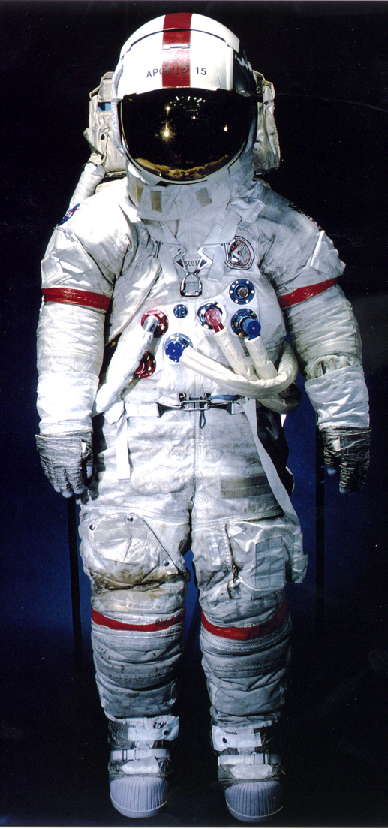Goddard Space Flight Center, Greenbelt, Maryland 20771
ENGINEERING COLLOQUIUM
Monday, 25 January, 2010 /
Amanda Young and Lisa Young
"Apollo Spacesuits: Saving America's Treasures"

ABSTRACT -- Most of us, when we visit the Smithsonian's National Air and Space Museum (NASM), don't spend much time thinking about materials engineering. It turns out, however, that the knowledge of materials properties is essential to the Museum's mission of preserving and displaying aerospace history. This talk will focus on the challenges of conserving the Museum's collection of spacesuits. Apollo spacesuits are composed of 20 to 24 layers of modern materials including Dacron, Mylar, nylon, teflon-coated fiberglass textiles, polyvinyl chloride, natural and synthetic rubbers, plastics, and metals. When they began their spacesuit preservation program, the NASM discovered that much of the information they had not been published. (This is another similarity between NASM and Goddard.) NASM therefore assembled a materials advisory group, including materials experts and some of the original spacesuit designers. They also studied the suits themselves. Some of the analytical techniques being used include pH testing, comprehensive digital and large format photography, colorimeter readings of the textile components using a Minolta Chroma meter, and CAT scans (to develop 3-d models). They are also studying the degradation products of the spacesuit materials.
SPEAKER -- Lisa Young currently works in the conservation unit at the National Air and Space Museum of the Smithsonian Institution. Lisa has 15 years of conservation and collections management experience. She has a B.Sc. in Archaeological Conservation (First Class Degree) from the University of Wales, Cardiff, U.K., and a B.A. in Anthropology from Mary Washington College, Virginia. She served as Project Conservator for the Save America's Treasures Grant Program and the Women's Committee Grant program at NASM preserving the Apollo and Gemini spacesuit collection. She is an active member and participant of professional organizations including the American Institute for Conservation (President 2005-07), and currently serves as the Angels Project Coordinator for the Guild. Her research interests include the conservation of polymers from historical and archaeological contexts. Ms. Young is an instructor for the University of Mary Washington and the National Preservation Institute.
Amanda Young is recently retired from the Smithsonian's National Air and Space Museum, where she was a museum specialist in the Division of Space History, responsible for the collection of Spacesuits and astronaut personal equipment, numbering approximately 3,000 objects.
During the course of her 25 years in this field, she was responsible for the care, history, preservation and display of the artifacts within the realm of her responsibility. This included the physical care, along with maintaining the files, history and display of each object.
Other highlights include responsibility for one section of a major "Save America's Treasures" grant in 2000, on the preservation of the Apollo artifacts. During this grant, she, along with the project conservator undertook groundbreaking research into the causes of deterioration of Apollo spacesuits and their components, resulting in the booklet on preservation, storage and display of spacesuits. Work continued with a further grant from the Smithsonian into the causes of deterioration of Gemini spacesuits.
She co-wrote Collections Care #5: The Preservation, Storage and Display of Spacesuits ( National Air and Space Museum, 2001). Was a contributing author to Extreme Textiles: Designing for High Performance (Princeton Architectural Press, 2005) and After Sputnik: 50 Years of the Space Age (Collins, 2007).
Wrote the popular book entitled Spacesuits: The Smithsonian National Air and Space Collection (Powerhouse, 2009)
Exhibits included the National Air and Space Museum portion of the major exhibit held in Tokyo, Japan entitled "American Festival Japan 94" (co-produced by a consortium headed by the Asahi Shinbum and the National Museum of American History 1990-1994). She was also responsible for displaying the spacesuit exhibits at the National Air and Space Museum's two locations.
Until her retirement in June, 2009, she continued to conduct research into the causes of spacesuit deterioration
Colloquium Committee Sponsor: Brent Warner
Engineering Colloquium home page: https://ecolloq.gsfc.nasa.gov